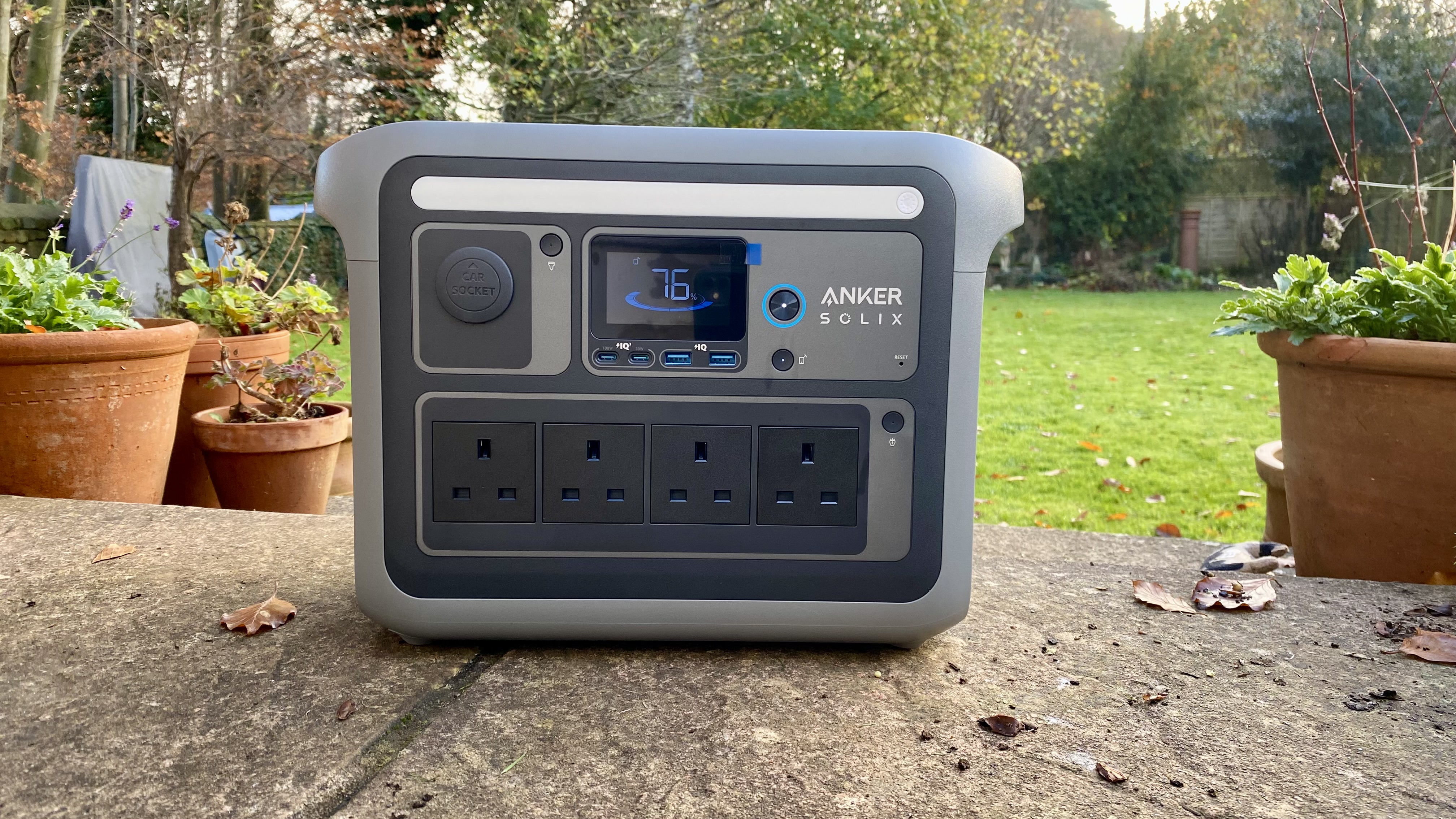
Welcome to our review of the all-conquering Anker Solix C1000, a portable power station that takes off-grid AC and DC power to new levels of sophistication, versatility and convenience.
Chinese electronics manufacturer Anker produces a range of some of the most efficient pocket-sized power banks, fast wall chargers and phone cables on the market, while its sister companies, Eufy and Soundcore, continue to impress with a broad assortment of high-end home security cameras and personal audio devices. The company is on a roll, in other words.
As a result of its expertise in battery technology, the company has now turned its attention to the world of portable power stations, and it’s shaking up the industry big time with a plethora of sturdy, highly-specced models that blow much of the opposition clean out of the water.
With 1,056 watt-hours, 1,800 watts of power (with a surge pad of a whopping 2,400W), four AC outlets and four USB ports, the new expandable Solix C1000 might just be the small-formed power station we’ve all been waiting for.
So, let’s plug some stuff in and see what this baby can handle.
Anker Solix C1000 review
Anker Solix C1000 review: price and availability
The Anker Solix C1000 is available in the UK from Amazon, where it’s selling for £999. Alternatively, try Anker UK or Anker US where it’s going $999/ £999 (approx. AU$ 1,505).
Anker Solix C1000 review: what’s so good about a power station?
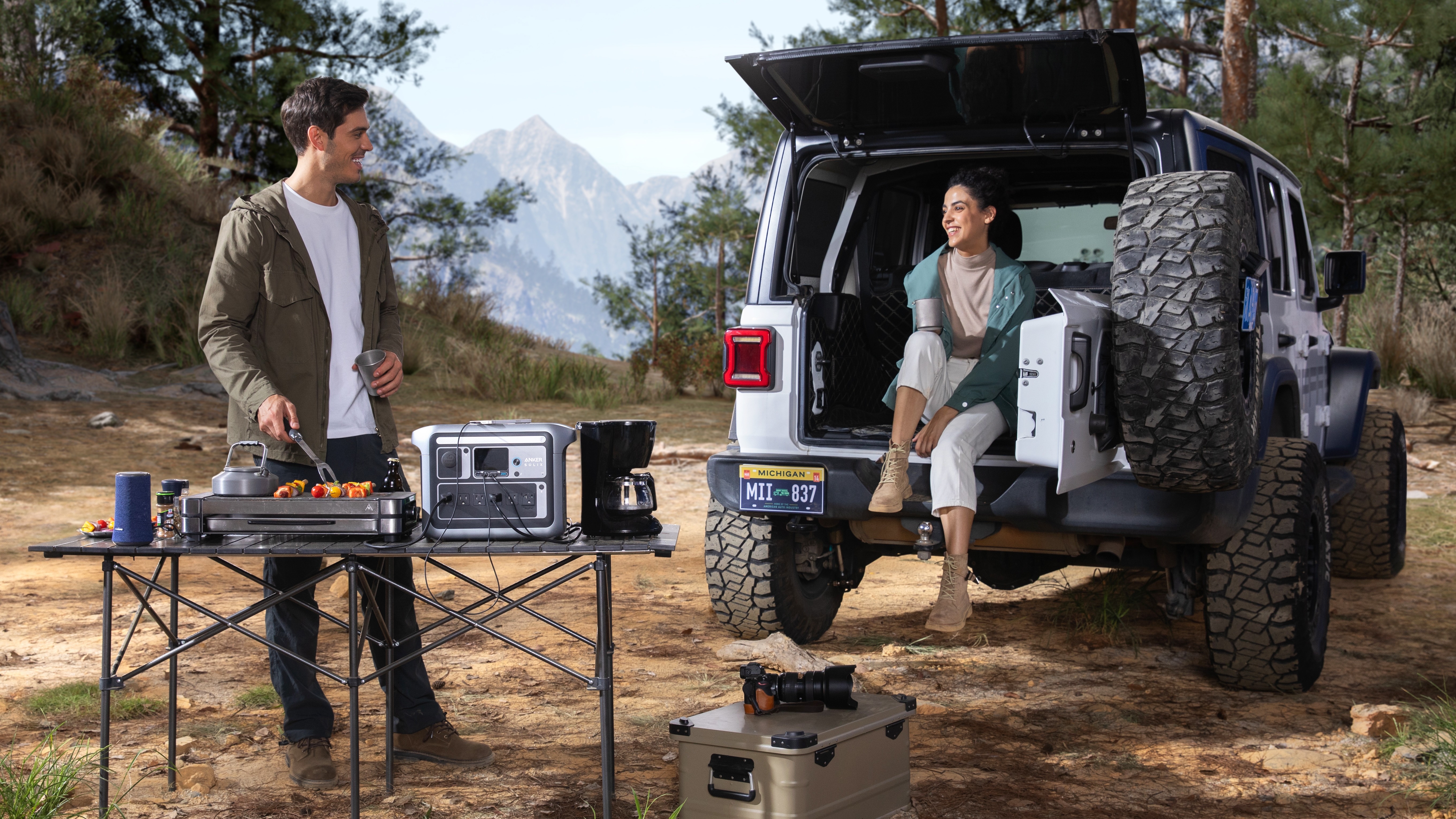
A portable power station, often referred to as solar generator, is essentially a battery-powered version of a petrol or diesel generator. However, unlike conventional fossil fuel generators that are bulky, extremely noisy and awfully smelly, a portable power station harnesses cutting-edge battery technology, DC to AC inverters and shrewd electronics to offer a clean, quiet and convenient power source that can be used both indoors and outdoors – as long as it’s not in the rain. Consequently, it is far and away the most sustainable and convenient choice for emergency backup during a power outage while being an indispensable companion for those seeking reliable energy on the go when car camping, tailgating, caravanning or picnicking.
The ability to charge various devices simultaneously – including the best smartphones, best laptops, best travel cameras and best drones – while delivering AC power to a myriad of essential household items underscores the adaptability of these remarkable 21st Century champions.
Anker Solix C1000 review: power station vs petrol generator
Let’s start with price. If you take, say 1,000W as a comparative output, a battery-run power station is still much more expensive to buy than a dirty fuel-guzzling generator. For instance, a typical 1,000W petrol generator retails at around £300 while the power station equivalent is nearer £700. However, as is the case with any relatively new technology, prices tend to plummet once manufacturing and design have been streamlined – and we are already seeing the results of this with big drops in power station prices.
When it comes to overall running time, you can’t beat a petrol generator. This is because you can simply top it up with fuel as and when. By comparison, a power station will eventually run flat and, in most instances, the only way to get it back up to full power is to recharge the whole caboodle via an AC outlet which, in some instances, could take some time. On the other hand, some of this inconvenience can be avoided if the power station is used in tandem with a portable solar panel – but only during daylight hours.
When it comes to outright convenience, quietness and emission-free cleanliness, no fossil fuel-powered generator can hold a candle to a battery model. Petrol, diesel and gas generators are as noisy as hell and they absolutely cannot be used in any indoor environment because, aside from the nasty smell and fire hazard they propose, they also emit high levels of Carbon Monoxide and other dangerous chemicals.
By contrast, a power station can be used indoors at any time to power a wide variety of essential household appliances, from internet routers, computers, TVs and coffee machines to fridges, freezers and even some washing machines. Indeed, some owners of larger power stations have been known charge their units with cheaper overnight electricity – Octopus runs such a scheme – so they can power the entire house during the day. Welcome to the future.
Anker Solix C1000 review: why you might need an Anker Solix C1000
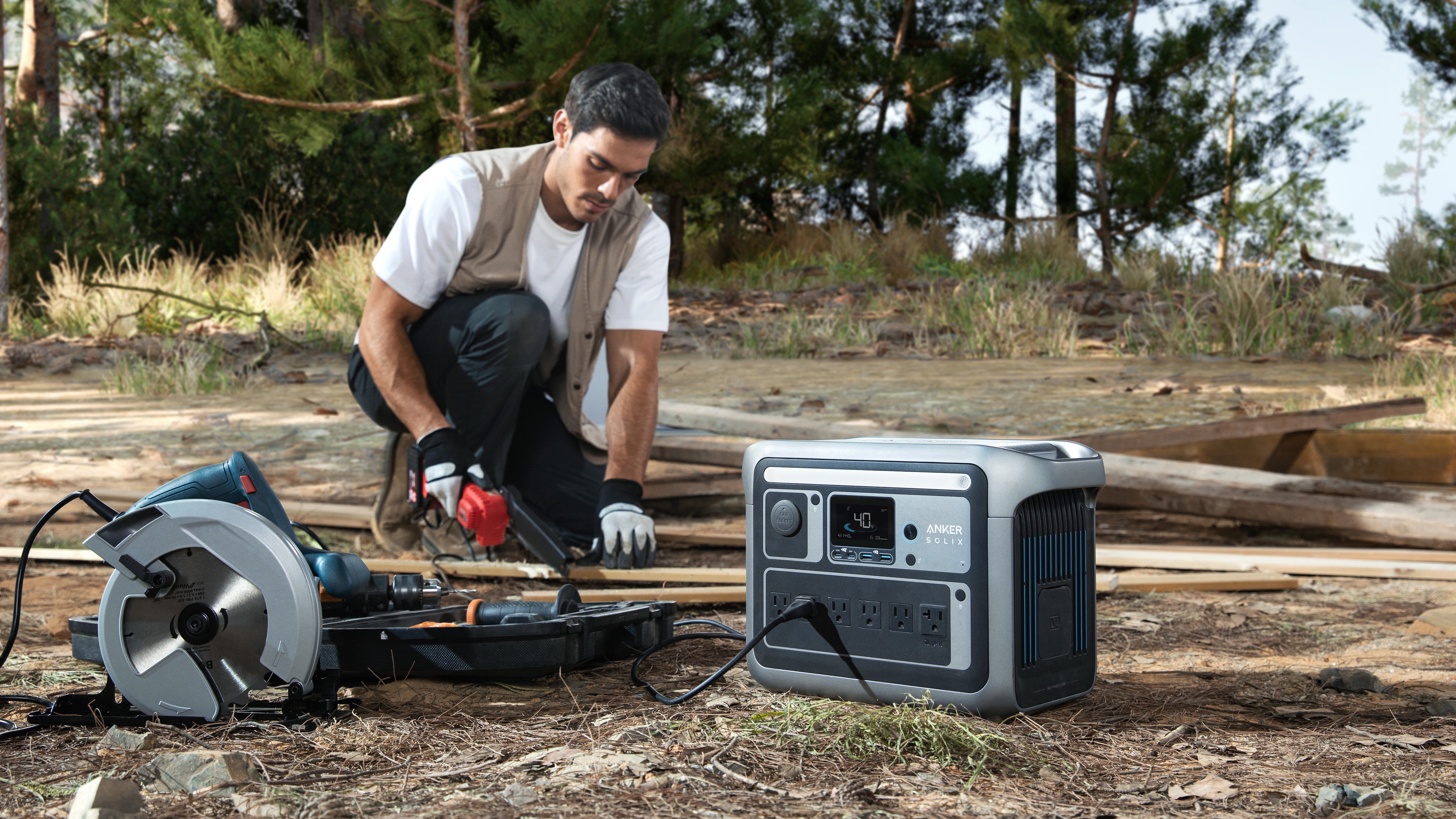
Admittedly, a battery power station may not be something you’ll use that often so if you’re thinking of buying one on a whim, consider how many times you might use it in an average year because portable power stations are not cheap to buy.
On the other hand, if you indulge in a lot of off-grid car camping, caravanning or RV touring, a device like this could revolutionise your future expeditions. It’s also a handy device to have around when working outdoors with mains-powered tools. Even when it’s not being used in the great outdoors, you’ll still be covered at home when the lights suddenly go out (see below).
A power station like the Anker Solix C1000 will run pretty much everything in your caravan or RV and it’s also an excellent ancillary power source for your van’s inverter since it can kick in at any time to help boost functions like heating, lighting and cooling while charging all your handheld devices. And if used in conjunction with a portable solar panel, chances are you will never run out of juice again. What’s not to like?
Anker Solix C1000 review: design and features
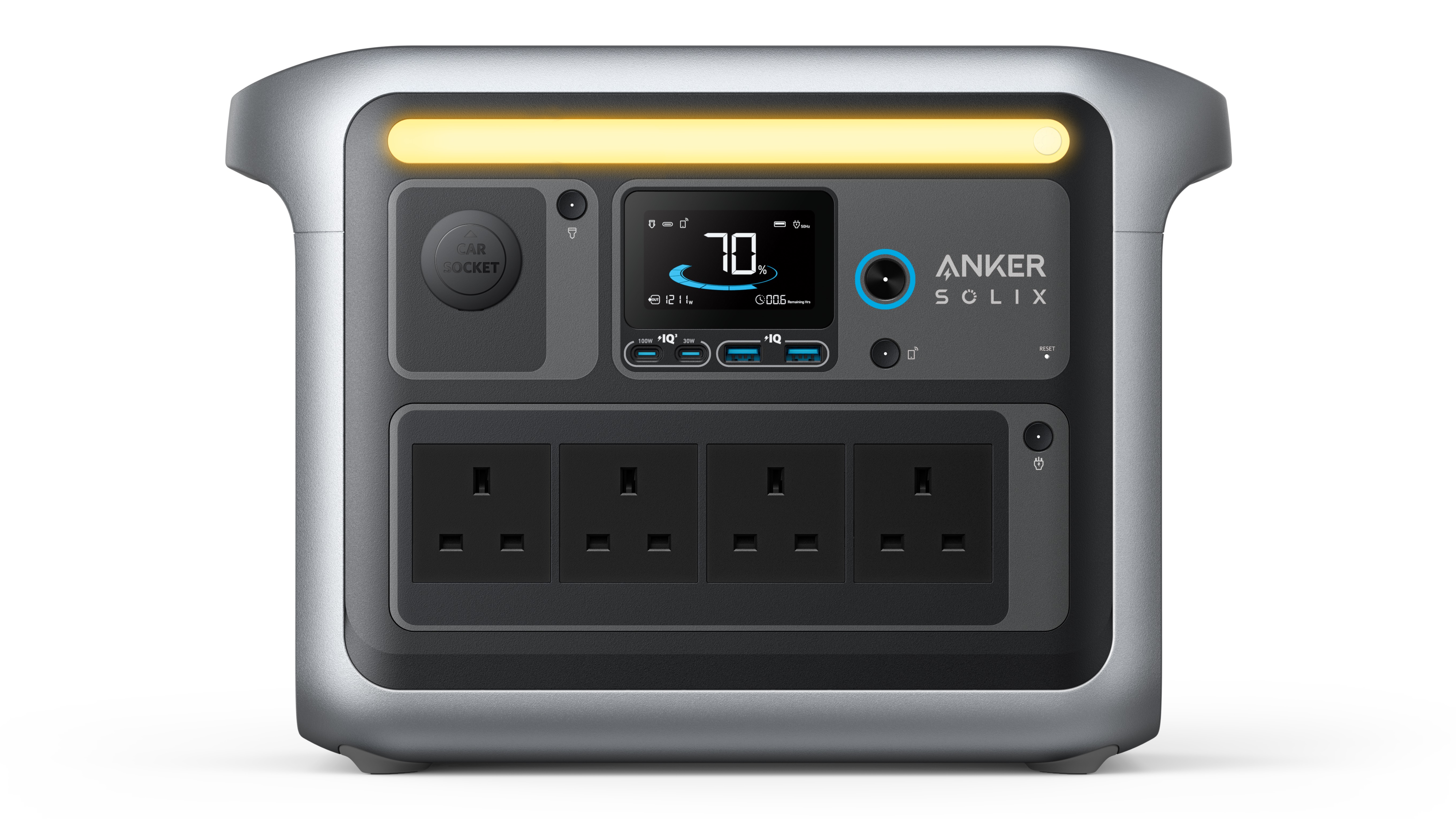
By their very nature, all power stations are heavy which is why they’re best suited to car camping, caravan or home use. At 12.9kgs, the Anker Solix C1000 is definitely too heavy to carry a fair distance on your own, though it’s light enough to move it around the house and into and out of the car without giving yourself a hernia. The two sturdy handles certainly make things a lot easier in this regard. Where some power stations seem quite flimsy, the Solix C1000 is built like a brick outhouse.
At 14.8 × 8.07 ×10.5in (37.5 x 20.5 x 26.5cm), the Anker Solix C1000 can be considered small for the amount of clout it provides. Its streamlined shape, too, is perfect for tucking away in a storage cupboard or fitting in the boot of a car.
My eyes always light up when I review something that looks entirely self evident without even so much as a glance at the accompanying manual – and so it is with this product. Let’s start with the top which is a flat surface for phones and tablets while they’re charging. Head down an inch below and there’s a long LED strip that delivers a diffuse warm white ambient light with four brightness settings plus an emergency flashing mode. Simply tap the button next to the strip to activate.
Amazingly the Solix C1000 is equipped with nine power outputs and that’s way more generous than most of the competition. Aside from its two 30W USB-As for phones, two 100W USB-Cs for laptops and other power-hungry devices and a DC port for hooking up camping gear like a 12v fridge or electric air pump, the Solix C1000 also comes with four 240v AC outlets (six in the US at 120v apiece). One cannot overstate just how handy it is having four AC outlets instead of the usual two, which is often the case with some manufacturers of similar-sized power stations.
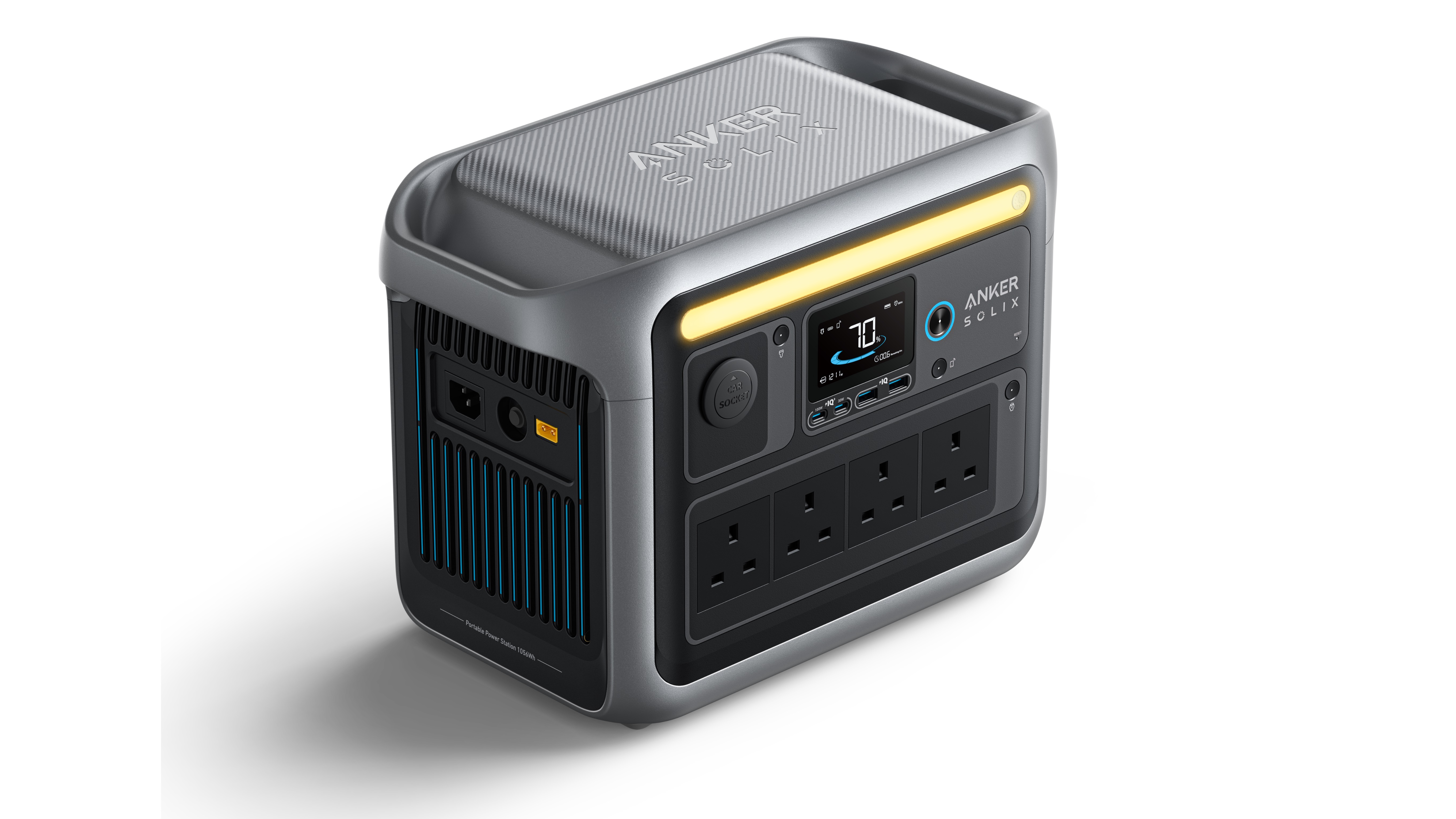
When it comes to outright power, this unit punches way above its weight. The four AC outlets provide a total of 1,800 watts of Pure Sine Wave oomph and that’s way more than enough to run most devices and appliances in a caravan or motorhome. But that’s not all because this beast also features a Surge Pad which can power high-wattage devices up to 2,400W without overload. It does this by performing balancing act between voltage and amps, marginally dropping the voltage to a device without affecting its performance. Most power-hungry devices – anything with a motor or heater in it – tend to draw more power when first turned on before backing off a bit. Essentially a surge pad gives these high-powered devices a little headroom during their initial startup phase.
Where some power stations state a capacity of, say, 1,000 watt hours, in reality it’s often somewhere nearer 950Wh. By contrast, the Solix C1000 has a capacity of 1,056Wh which is 56 more than what the model’s moniker suggests. And if you opt for the additional Expansion Battery, the capacity is boosted to a magnificent 2,112Wh.
Like all decent power stations, the Solix C1000 also works in tandem with most portable solar panels up to 600W so definitely consider adding one of Anker’s solar panels at checkout if you want to benefit from almost endless power while the sun shines.
This model is also equipped with UPS (uninterruptible power supply) which means that if you have it plugged into the mains while using it at the same time, the Solix will continue to feed your devices and appliances in the event of a mains power cut. What’s more, the transition from mains to battery takes just 20 milliseconds.
When it comes to recharging the unit, the Solix C1000 can perform a full recharge from flat to 100% in what may well be an an industry-leading 58 minutes if using the Power-Ready Anytime with HyperFlash facility. You can recharge it via 240v mains or a 12-volt cigarette lighter socket.
The Solix C1000’s Lithium Ion Phosphate battery is good for up to 3,000 charge cycles and I can’t see that ever being an issue even if you recharge the thing every single day of its life – which, incidentally, is stated at 10 years. Just be mindful of setting a calendar reminder to top the battery up every six months if the battery is in storage.
Anker Solix C1000 review: app
For full functionality, it’s best to use the Solix C1000 with the accompanying Anker app. Aside from providing full realtime stats, the app also allows you to select parameters like the ultrafast charging facility and adjust its AC recharging wattage from 1,000W all the way down to 200w. Hence, if you’re in a campervan or caravan, you can recharge the Solix without drawing too much power from your vehicle’s main inverter. The app also provides the wherewithal to select screen brightness, screen timeout, unit timeout and the LED light’s SOS mode.
Anker Solix C1000 review: a power-cut scenario
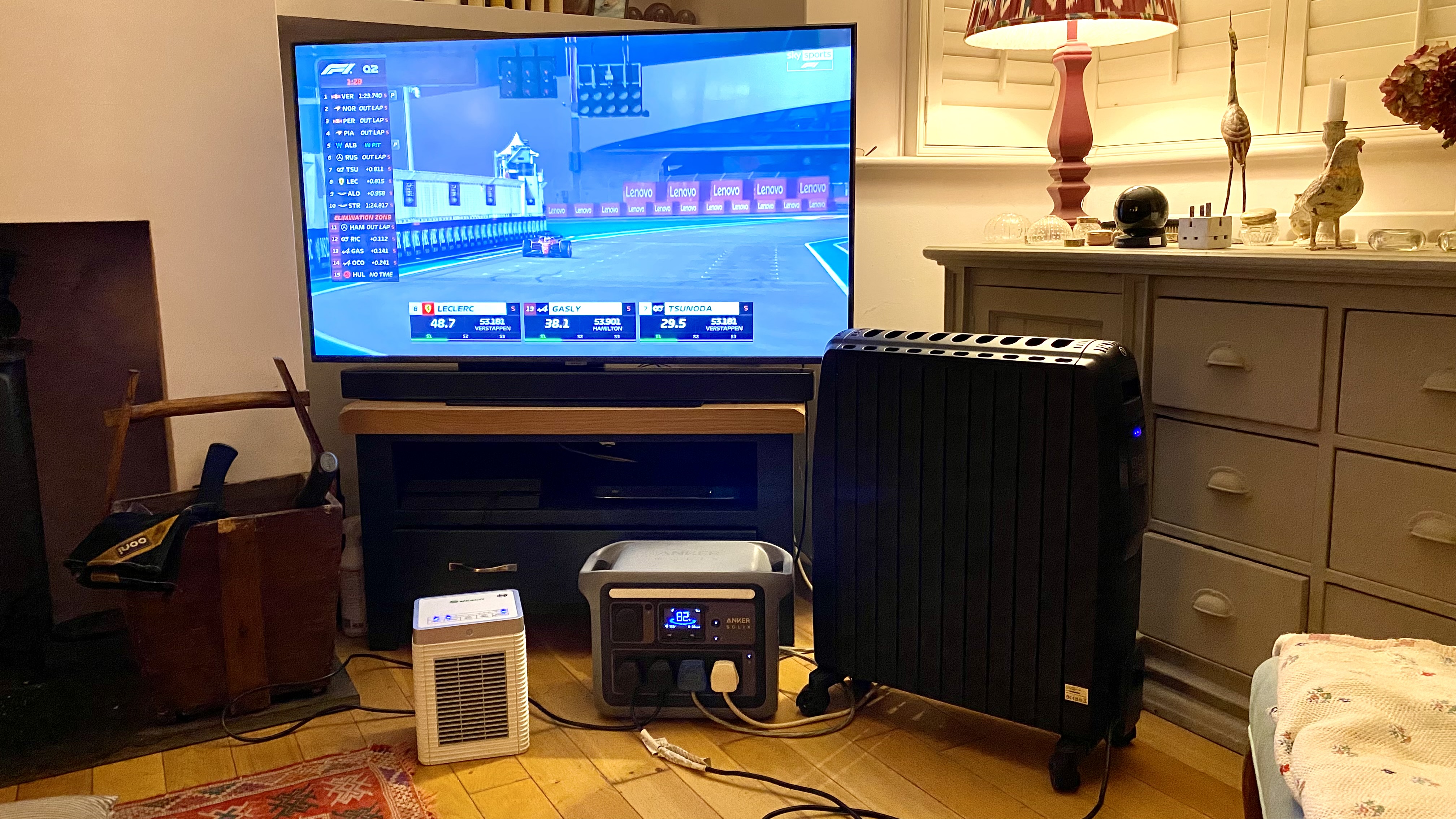
Given that I live in a village where power outages are more common than in urban areas, I imagined a scenario where I have a power cut for more than one hour and need to run my home’s most essential appliances during that period. You know, the stuff you miss the most when the power’s out. For this test I included a Samsung TV, Sky Q box, JBL Soundbar, a single Philips Hue lamp and a 2,500W VonHaus oil filled radiator because it’s winter and it’s cold. Combined, these items drew between 1,115W and 1,125W. Fiddlesticks. So I upped the ante and added a small Meaco blow heater on the low setting (it’s rated at 1.8kW on max) and this took the power consumption to between 1,792W and 1,902W. At this point the Solix C1000’s fans kicked in but they were still quiet enough to watch and clearly hear the results of the F1 qualifying.
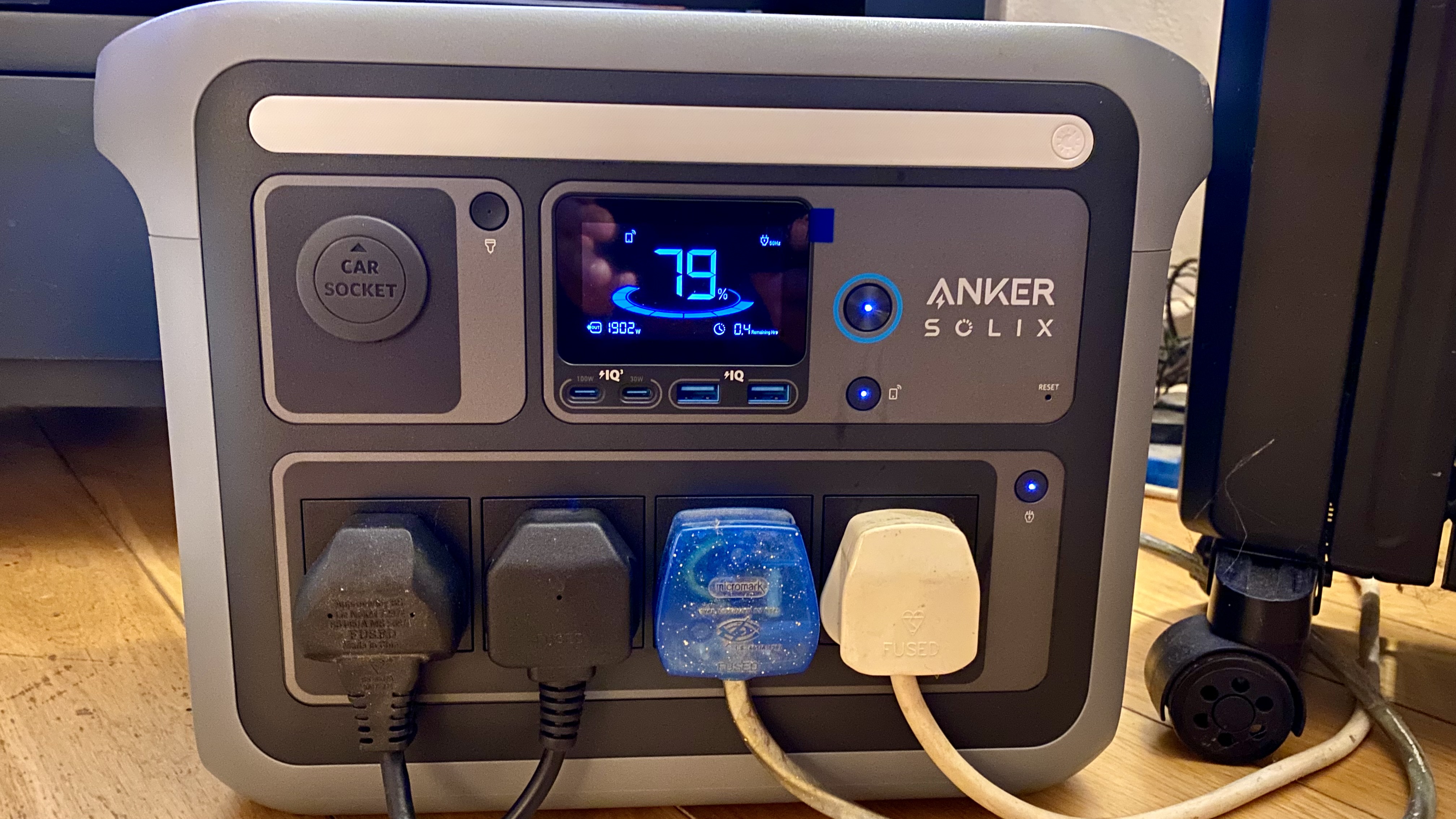
To be honest, I expected the Solix to trip its side-mounted fuse switch when I added the Meaco heater but, in sterling fashion, it just continued to feed everything without so much as a glitch. Amazing. Yes, the battery level dropped from 90% to 70% in the time it took to perform the test – about 15 minutes in all – but this was an extreme scenario because I would normally have the log burner blazing for warmth. Nevertheless, it just goes to show how efficient these power stations can be – and what a godsend they are when there’s an area-wide power outage at night in the depths of winter. Had I disregarded the two heaters I could easily have made a couple of cups of espresso using the Smeg Lavazza machine while charging my MacBook Air and running the internet router. Furthermore, with some ingenuity involving a few extension cables, it would theoretically be possible to also hook up a gas boiler (170Wh), a tall-standing fridge freezer (around 600Wh) and a load more lights.
One thing that caught my attention when researching the power consumption of my home’s various appliances was how well buried they are in manufacturers’ specs. In fact many of the appliances I was researching didn’t have any electricity consumption figures at all. Given that we’re all so much more aware of our electricity usage, it must surely time for manufacturers to start clearly labelling their products with accurate electricity consumption figures so consumers can make their own calculated choices.
Anker Solix C1000 review: performance
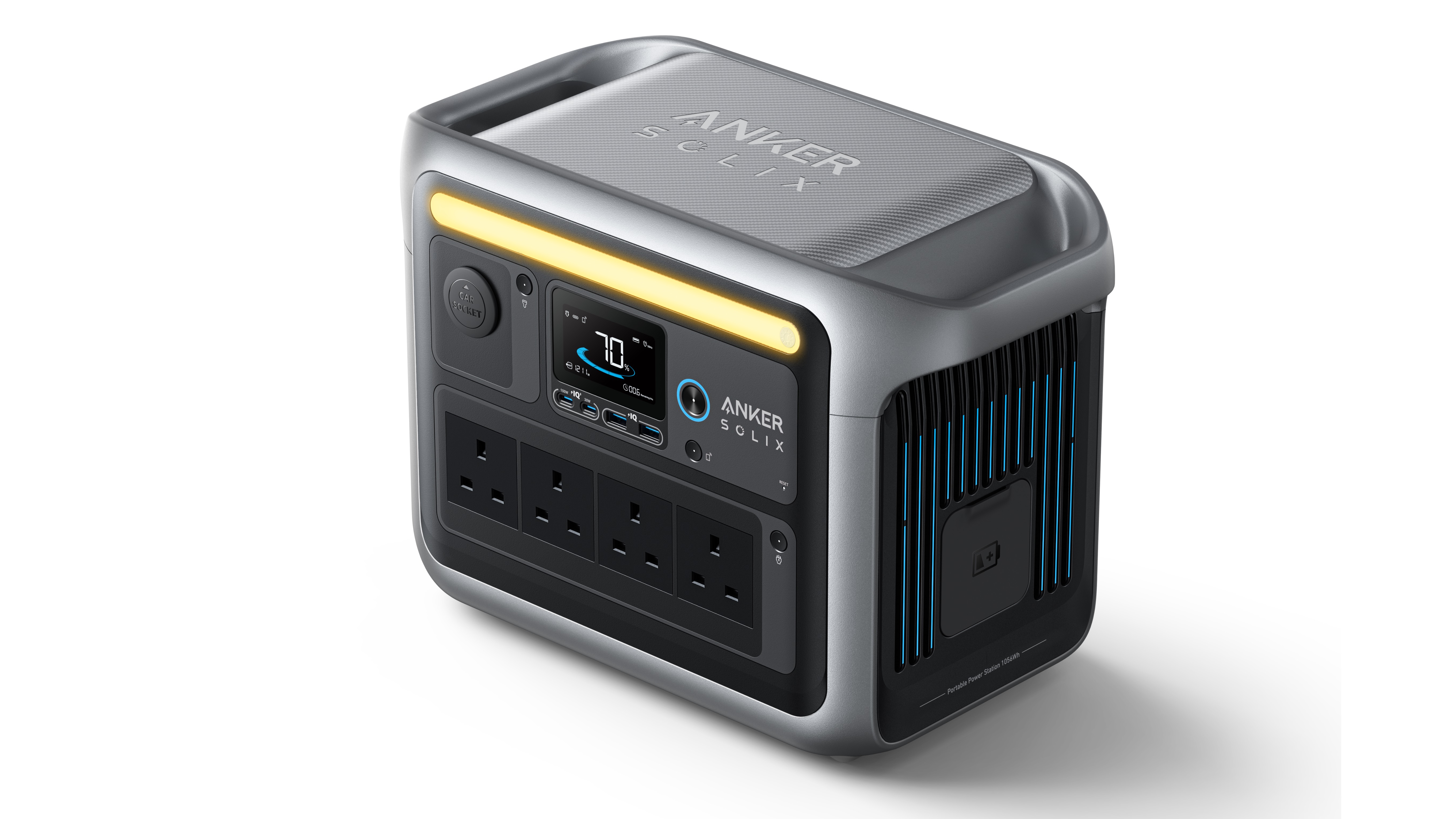
I have nothing but positive things to say about this model. It’s been a doddle to use and so far it’s powered everything I’ve plugged into it. No I haven’t tried it with the washing machine just in case it trips and the machine’s drawer locks shut and no, I don’t think it would handle my tumble dryer with its huge drum motor and high-powered heater. But, as my more modest home test above determines, this electron-wielding titan is more than a match for most household devices and appliances. And what’s more, it holds a full 240v charge even when the battery’s juice supply is well below 5%.
Anker Solix C1000 review: verdict
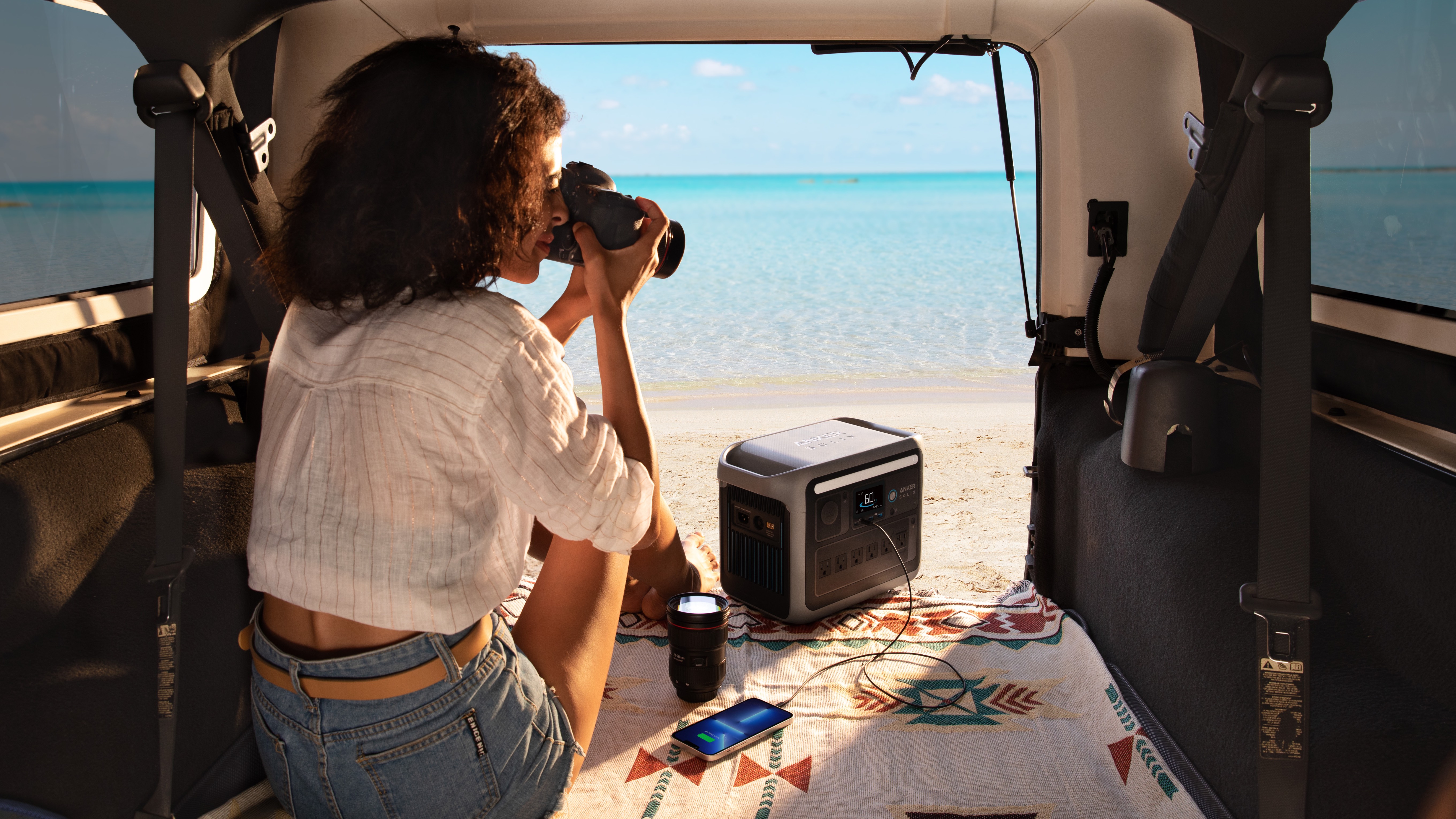
If you’re scouring the market for a relatively lightweight and small portable power station that packs a mighty punch in practically all disciplines, the Anker Solix C1000 is an absolute shoo-in. It’s easy to use, not too heavy given the weight of batteries in general and it performs more reliably than some electricity companies I know. Top choice.







